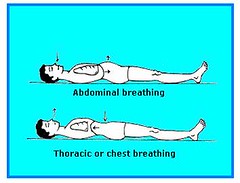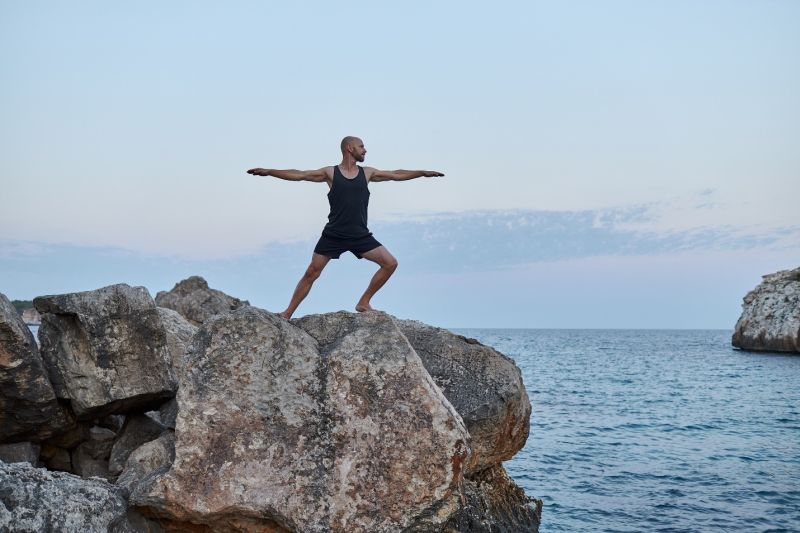Elevate Your Life: Embrace the Magic of 11th-Step Meditation.
The Power of 11th-Step Meditation: Picture this: It’s a deadline looming like ominous clouds on the horizon, with life’s demands pulling you in every direction.
The city outside your window is a blur of motion and noise, a concrete jungle in perpetual chaos. Amid this whirlwind, I stumbled upon a hidden oasis of serenity – the 11th-step Meditation.
Close your eyes briefly and imagine stepping into a quiet room bathed in soft, golden light.
The walls seem to breathe calmly, and a gentle breeze carries the soothing scent of lavender. A plush cushion beckons in the corner, inviting you to leave your worries behind and sit.
As you settle in, the outside world’s noise fades away, replaced by a gentle hum of serenity. It is where the journey begins.
Today, I will unveil how this simple, yet profound meditation technique can become your anchor amidst life’s storms.
In the stillness, you find your breath slow and steady like the rhythmic waves of a tranquil sea. The chaos that once engulfed you becomes distant, almost like a dream.
The cluttered thoughts in your mind start to organize themselves like stars forming constellations in the night sky.
Now, imagine the profound impact this practice can have on your life. From finding calm amidst chaos to forging a deeper spiritual connection, the 11th-step meditation holds the key.
It’s a cinematic journey, with each meditation session revealing a new scene of your life’s story, where serenity is not a distant dream but a tangible reality.
Are you ready to unlock the door to inner Peace and clarity?
Join me as we dive deeper into this world, where each meditation session is a new chapter in your life’s movie, where you are the star and director of your peaceful narrative.
Get ready to embark on a journey that promises not just serenity but a profound shift in your life, like a masterpiece unfolding on the big screen of your soul.
The 11th Step of Alcoholics Anonymous (AA) involves seeking conscious contact with a higher power through prayer and Meditation.
This Step is crucial in maintaining sobriety and spiritual growth. Many AA members use Meditation to connect with their higher power and gain clarity and Peace of mind.
AA 11th-step meditation can take many forms, such as guided, silent, or prayer.
This practice aims to improve one’s conscious contact with their higher power and gain the knowledge and power to carry out their higher power’s will.
Meditation can also help individuals better understand themselves and their place in the world.
AA 11th-step meditation can be a powerful tool for managing stress, anxiety, and other negative emotions for those in recovery.
By cultivating regular Meditation, individuals can learn to cope better with demanding situations and gain a sense of inner Peace.
Overall, AA 11th-step meditation is an essential component of the AA program and can be a valuable tool for anyone seeking spiritual growth and sobriety.
Understanding the 11th-Step
Secrets of Serenity: Unveiling the 11th-Step Meditation
The 11th Step of Alcoholics Anonymous (AA) involves seeking a deeper connection with a higher power through prayer and Meditation.
It is an essential part of the recovery process for many individuals who follow the AA program. As someone who has benefited from this Step, I can attest to its power in helping me maintain sobriety.
The 11th Step is often called the “maintenance step” because it helps individuals stay grounded in their recovery.
It involves seeking conscious contact with a higher power, which can be interpreted in various ways depending on an individual’s beliefs.
It means connecting with a power greater than myself that helps guide me daily.
Prayer and Meditation are the primary means of achieving this conscious contact. Through prayer,
I ask my higher power for guidance and strength to stay sober.
Meditation allows me to quiet my mind and listen for any messages or insights that my higher power may be trying to communicate to me.
It’s important to note that the 11th Step is not about asking for specific outcomes or material possessions.
Instead, it’s about seeking knowledge of my higher power’s will for me and the power to carry it out. It means trusting that my higher power has a plan for me and that I can carry it out with their guidance.
In conclusion, the 11th Step of AA is a powerful tool for maintaining sobriety and seeking a deeper connection with a higher power.
Through prayer and Meditation, individuals can achieve conscious contact with their higher power and gain guidance and strength to stay sober.
The Role of Meditation in the 11th Step
Reflecting on my experience with the 11th Step of Alcoholics Anonymous, I am reminded of Meditation’s important role in this Step.
According to the AA literature, the 11th Step involves seeking through prayer and Meditation to improve our conscious contact with a higher power, as we understand it, praying only for knowledge of their will for us and the power to carry that out.
Meditation is a powerful tool that can help us achieve this goal.
By quieting our minds and focusing our attention, we can become more receptive to the guidance of our higher power.
Regular practice connects us more deeply with our spiritual selves and the world.
Many different types of Meditation can be used in the 11th Step. Some people prefer guided meditations, which provide a structured framework for their practice.
Others prefer to use more traditional forms of Meditation, such as mindfulness or loving-kindness meditation.
Regardless of the technique, the key is approaching Meditation with an open mind and a willingness to learn.
It may take time to develop a regular practice, but the benefits of doing so can be profound.
In my own experience, Meditation has helped me to cultivate a sense of inner Peace and serenity that I never thought possible.
By quieting my mind and connecting with my higher power, I have gained a deeper understanding of myself and my place in the world.
I encourage anyone interested in the 11th Step to explore Meditation’s role in their spiritual journey.
Practical Techniques for 11th-Step Meditation
As I have practiced the 11th Step Meditation, I have found that a few techniques have benefited me. In this section, I will share two techniques: Breathing Techniques and Mindfulness Practices.

Unlock the secrets to a harmonious existence through Meditation. agmatic-Breathing-Exercises-Technique
Breathing Techniques
Breathing techniques can be a helpful way to calm the mind and body and focus during Meditation.
One technique that I have found particularly helpful is the 4-7-8 breathing technique.
To practice this technique, I inhale for a count of four, hold my breath for seven, and exhale for eight. I repeat this cycle for several minutes, focusing on the breath and counting each inhale and exhale.
Another technique that can be helpful is the use of a mantra or phrase to focus the mind during Meditation.
For example, I might repeat the phrase “I am at peace” with each inhale and exhale, or I might focus on the word “serenity” or “love.”
The key is to choose a phrase or word that resonates with you and to repeat it consistently throughout the Meditation.
Mindfulness Practices
Mindfulness practices can also be helpful during the 11th Step of Meditation. One practice that I have found particularly useful is body scan meditation.
During this practice, I focus on each body part, starting with my toes and working to the top of my head.
I pay attention to any sensations or feelings in each body part without judgment or analysis.
This practice can help me to become more aware of my body and to release tension or discomfort.
Another mindfulness practice that can be helpful is the use of visualization.
For example, I might visualize a peaceful scene, such as a beach or a forest, and imagine myself walking through that scene.
I might focus on the scene’s sights, sounds, and smells and fully immerse myself in the experience. This practice can help promote relaxation and reduce stress.
In conclusion, many techniques can be helpful during the 11th Step Meditation.
Experiment with different techniques and find the ones that work best for you.
Remember that the goal of Meditation is not to achieve perfection or to eliminate all thoughts but rather to cultivate a sense of Peace and connection with a higher power.
Benefits of 11th-Step Meditation
As someone who practices the 11th Step Meditation, I have experienced numerous benefits that have improved my physical, emotional, and mental well-being.
Here are some of the benefits of 11th Step Meditation that I have personally experienced:
H3 Improved Focus and Concentration
11th Step Meditation involves focusing on a specific object or thought, which helps to improve focus and concentration. With regular practice, I have noticed that I can concentrate better on my work, studies, and daily tasks.
Reduced Stress and Anxiety
Meditation is known to reduce stress and anxiety levels.
By practicing 11th Step Meditation, I have learned to be more mindful and present, which has helped me manage my stress and anxiety levels better.
Increased Self-Awareness
11th Step Meditation involves becoming more aware of your thoughts, emotions, and physical sensations. It has helped me become more self-aware and better understand my thought patterns and behaviors.
Improved Sleep
Meditation can help to improve the quality of sleep. By practicing 11th Step Meditation before bedtime, I have noticed that I can fall asleep faster and sleep more soundly throughout the night.
Increased Compassion and Empathy
11th Step Meditation involves cultivating compassion and empathy towards oneself and others.
With regular practice, I have noticed that I am more patient and understanding toward others, and I can approach situations with a more compassionate and empathetic mindset.
11th Step Meditation has numerous benefits that can improve one’s physical, emotional, and mental well-being.
By incorporating regular meditation practice into my daily routine, I have experienced these benefits firsthand and would highly recommend them to others.
Challenges in 11th-Step Meditation
As with any practice, there are challenges that one may encounter when trying to incorporate 11th-step meditation into their daily routine. In this section, I will discuss some common obstacles and how to overcome them.
Common Obstacles
Busy Schedule
A busy schedule is one of the most common obstacles in establishing a consistent 11th-step meditation practice.
Many people struggle to be available for Meditation in their daily routines. However, it is essential to remember that even a short meditation session can be beneficial.
Start with a few minutes daily and gradually increase the time as you become more comfortable with the practice.
Restlessness
Another challenge that many people face is restlessness during Meditation.
It is expected to experience a wandering mind or physical discomfort while sitting in stillness.
However, it is essential to remember that this is a normal part of the meditation process.
Instead of getting frustrated, observe these thoughts and sensations without judgment and gently bring your focus back to your breath.
Doubt
Doubt is another common obstacle that can arise during Meditation.
Many people may question whether they are doing it right or if it is even working. It is important to remember that there is no right or wrong way to meditate and that the benefits may not be immediately apparent.
Trust in the process and continue to practice consistently.
Overcoming Challenges
Accountability
One way to overcome these challenges is to establish accountability. Find a meditation partner or group that can help keep you motivated and on track.
It can also provide an opportunity for discussion and support.
Guided Meditations
Guided meditation can also be a helpful tool in overcoming challenges.
Many resources, including apps, websites, and podcasts, offer guided meditations for beginners.
These can provide structure and guidance for those new to Meditation or struggling with consistency.
Mindfulness Practices
Incorporating mindfulness practices into your daily routine can also help overcome challenges in Meditation.
It can include mindful breathing exercises, movement, or being present and aware in everyday activities.
In conclusion, while there may be challenges in establishing an 11th-step meditation practice, there are also many ways to overcome them.
By being consistent, patient, and open-minded, anyone can reap the benefits of this powerful practice.
Case Studies of Successful 11th-Step Meditation
I have encountered many case studies of individuals who have successfully incorporated the 11th Step Meditation into their daily routines.
Here are a few examples:
Case Study 1: John
John, a recovering alcoholic, struggled to maintain sobriety for several years.
He had tried various methods, including therapy and medication, but nothing seemed to work.
It wasn’t until he discovered the 11th Step Meditation that he could find inner Peace and maintain his sobriety.
John started practicing the 11th Step Meditation every morning before starting his day.
He would sit quietly and focus on his breath, repeating a mantra to himself.
The practice helped him stay centered and focused throughout the day, and he found that he could handle stressful situations without turning to alcohol.
Case Study 2: Sarah
Sarah had been sobering for several years when she discovered the 11th Step Meditation. She had always struggled with anxiety and depression, and Meditation helped her manage her symptoms.
Sarah would practice the 11th Step Meditation every evening before bed.
She found that it helped her to relax and let go of any negative thoughts or emotions from the day. She also noticed that she slept better and woke up refreshed in the morning.
Case Study 3: Tom
Tom had been a member of AA for several years but had always struggled with the spiritual aspect of the program.
He had difficulty connecting with a higher power and felt he was missing a critical program component.
When Tom discovered the 11th Step Meditation, it helped him deepen his spiritual practice. He would practice Meditation every morning and evening and found that it helped him connect with his higher power in a way he never had before.
Overall, these case studies demonstrate the power of the 11th Step Meditation in helping individuals maintain their sobriety and deepen their spiritual practice.
While the practice may not work for everyone, it is worth exploring for those looking to improve their conscious contact with a higher power.
Conclusion
In conclusion, the 11th Step of AA is an essential part of recovery for those in the program.
By seeking conscious contact with a higher power through prayer and Meditation, individuals can find the strength and guidance necessary to maintain sobriety and live a fulfilling life.
Through the practice of Step 11, individuals can develop a deeper understanding of their spirituality and connection to a higher power.
It can provide a sense of Peace and purpose essential for maintaining sobriety and living a fulfilling life.
It’s important to note that the 11th Step is not a one-time practice but a daily commitment to seeking conscious contact with a higher power.
By incorporating prayer and Meditation into their daily routine, individuals can continue to strengthen their connection to a higher power and find the guidance and strength necessary to maintain sobriety.
Overall, the 11th Step is an essential part of the AA program and can provide individuals with the tools necessary to live a fulfilling life in sobriety.
By embracing the practice of prayer and Meditation, individuals can find the Peace, purpose, and strength necessary to overcome the challenges of addiction and live a life free from alcoholism.
Elizabeth Redd: I am a passionate advocate for Health and Healing, dedicated to empowering individuals to live their best lives.
As the founder and publisher of Health and Healing, I have established myself as a guiding force in the wellness industry.
I am committed to providing the latest research, holistic approaches, and inspiring stories to open new possibilities for your health and healing journey.
Learn more about Elizabeth and Join Us at Health and Healing. Also, check out My About Page.









0 Comments